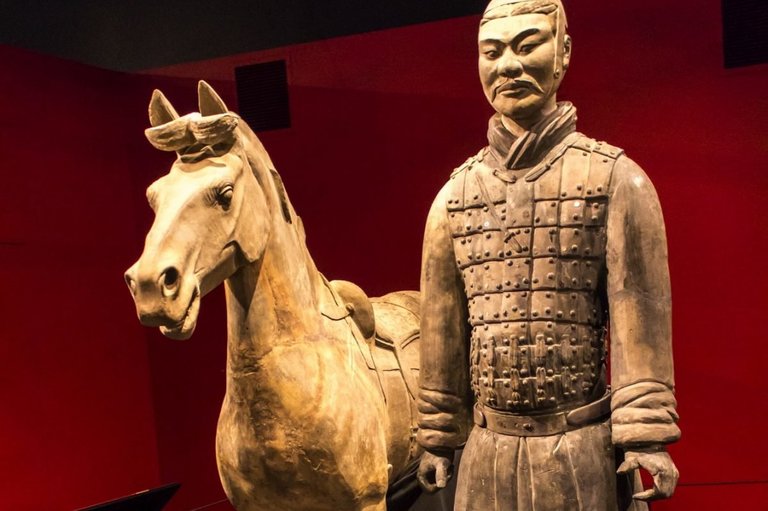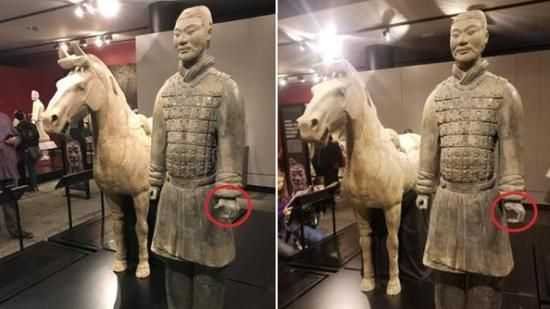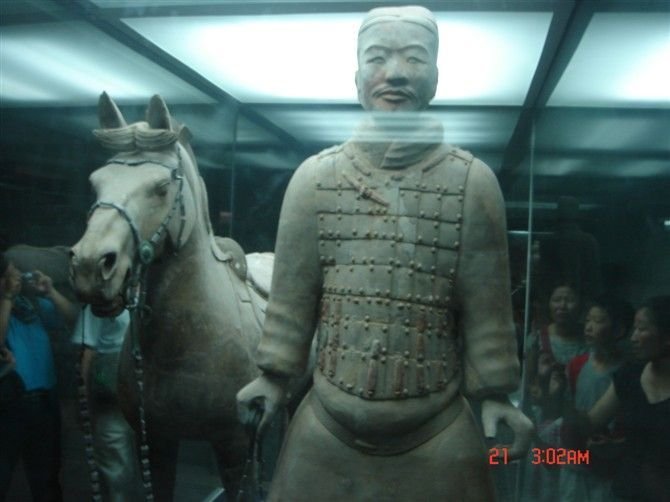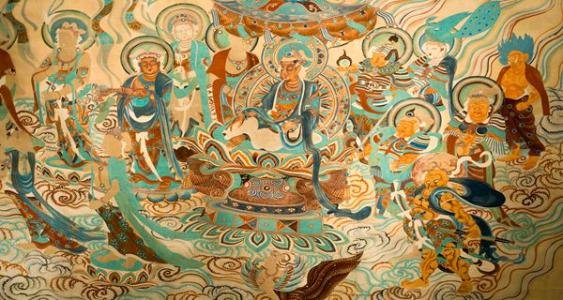“Man stole an ancient terra-cotta warrior’s thumb in Philadelphia, FBI says.” There is a piece of news from The Washington Post on February 20. That was shocked Chinese.
The Washing Post reported: “For more than 2,000 years, the terra-cotta cavalryman statue guarded the tomb of China’s first emperor, surviving centuries underneath the ground.
Then, in December, a man in an ugly sweater took his thumb.
And a selfie.”

(The terra-cotta warrior which wasn't broken)
On December 21, 2017, A Man from Delaware and his five friends attended the Philadelphia museum institute of Franklin "Ugly Sweater parties" (Ugly Sweater parties). The monitor shows that Michael Rohana, wearing a long-sleeved green sweater and Phillip’s team hat on the night of the party, entered an exhibition area that was supposed to be closed. The exhibition area includes 10 Terra-Cotta Warriors, 170 gold ornaments, jade articles, and coins, which borrowed from China Shaanxi History Museum. Rohana is sneaking into the closed exhibition hall at 9:15 p.m., he broke off one of the soldiers' left thumb and put it into his left pocket.
According to the Washington Post reported, “Franklin Institute staff didn’t discover that the thumb was missing until Jan. 8, according to the affidavit.”

( Photo from The New York Times. Before the terra-cotta warrior's thumb stolen and after)
Besides the terrible security measures that The Franklin Institute did, there was another question Chinese people discussed with that news,“Should museums naked their collections?” Because artifacts always protected in the glass when exhibited in Chinese museums.

( Another similar terra-cotta warrior exhibits in China, in glass)
The British Museum is one of the earliest to create several modern museums in the world. At the museum first opened (1759), a German audience left this description: "we were taken to one and another glass ordered in the room, clean glass inside, completely can't remember what visited."
There is a distinct advantage with naked exhibitions; the artifacts are more accessible to visitors. Visitors could closer to see the real history through these naked collections. For collections, the presentation is the primary value. Direct observation is the best experience for visitors. So the naked exhibition is the tendency for museums. But on another side, glass can provides better protection for collections. Besides, the light show of glass exhibition also can give a different visiting experience of visitors.
How to balance the protection and the exhibition? So, museums are select a High transmittance display glass for these collections have to be protected. Light through the glass lossless, visitors will feel the glass very clear. Also, there are many risks associated with the exhibitions of museums, and these risks must be efficiently prevented. After all, the artifacts broken can hardly be repaired. There is news that because of the sweat and body temperature visitors bring, some caves of the Mogao Caves in China will be closened for protecting. That was a really regret for people haven't see it.

100% of the SBD rewards from this #explore1918 post will support the Philadelphia History Initiative @phillyhistory. This crypto-experiment conducted by graduate courses at Temple University's Center for Public History and MLA Program, is exploring history and empowering education. Click here to learn more.
Interesting problem. Well dissected. I wonder what we could learn from looking at a collection of these incidents and the responses to them.